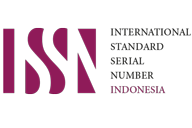Pembelajaran Berdiferensiasi dalam Perspektif Konstruktivisme Pada Mata Pelajaran PPKn di SMP Negeri 1 Paguyangan
DOI:
https://doi.org/10.53863/kst.v5i02.943Kata Kunci:
Constructivism, Differentiated Learning, Pancasila and Civic EducationAbstrak
Conventional learning problems that regard teachers as the sole authority of knowledge, sources of knowledge that are textual and rigid, teaching methods that are limited to lectures, lack of effectiveness and role of students, and not channeling students' interests, talents and potential, require different learning strategies. The aim of this research is to describe differentiated learning from a constructivist perspective in Civics subjects at SMP Negeri 1 Paguyangan. The type of research used in this research is descriptive qualitative combined with literature study. The research results show; (1) constructivism is very relevant. (2) things that must be considered in implementing differentiated learning include; availability of supporting learning facilities and infrastructure; availability of tools, media and contextual learning resources; analysis of school and student background; analysis of student needs. (3) the differentiated learning perspective of Civics learning built through constructivism both have very suitable characteristics. (4) differentiated earning from a constructivist perspective has strengths and weaknesses.
Keywords: Constructivism, Differentiated Learning, Pancasila and Civic Education
Referensi
Agus N Cahyo, Panduan Aplikasi Teori-Teori Belajar Mengajar Teraktual Dan Terpopuler, (Jogjakarta, Divapres: 2013). Hal.33.
Alhafiz, Nurzaki. 2019. Analisis profil gaya belajar siswa untuk pembelajaran berdiferensiasi di SMP Negeri 23 Pekanbaru, 1(8), 9–25.
Cahyo, Agus N . 2013. Panduan Aplikasi Teori-Teori Belajar Mengajar Teraktual Dan Terpopuler, (Jogjakarta, Divapres: 2013). Hal.33.
Driver, R & Oldham, V. 1986. A “Constructivist Approach to Curriculum Development in Science”. Studies in Science Education 13, 105-122.
Isjoni. 2007. Cooperative Learning: Efektifitas Pembelajaran Kelompok. Bandung: Alfabeta.
Kementerian Pendidikan dan Kebudayaan. 2014. Buku Guru Pendidikan Pancasila dan Kewarganegaraan.
Kurnia, Devi. (2022). “Analisis Penerapan Pembelajaran Berdiferensiasi Dalam Kurikulum Merdeka Pada Materi Tata Surya Di Kelas VII SMP, Universitas Riau.” Jurnal Tunjuk Ajar. 5, 278–290.
Masitoh, S., & Cahyani, F. (2020). “Penerapan Sistem Among Dalam Proses Pendidikan Suatu Upaya Mengembangkan Kompetensi Guru.” Kwangsan: Jurnal Teknologi Pendidikan, 8(1), 122. https://doi.org/10.31800/jtp.kw.v8n1.p122--141.
Marlina, Marlina. (2019). “Panduan Pelaksanaan Model Pembelajaran Berdiferensiasi di Sekolah Inklusif.” PLB FIP UNP, Padang. http://repository.unp.ac.id/id/eprint/23547.
Schunk, D.H. (2012). Learning Theories. An educational Perspectives. Teori-teori Pembelajaran: Perspektif Pendidikan. Edisi keenam. Yogyakarta: Pustaka Belajar.
Suwartiningsih, S. (2021). “Penerapan Pembelajaran Berdiferensiasi untuk Meningkatkan Hasil Belajar Siswa pada Mata Pelajaran IPA Pokok Bahasan Tanah dan Keberlangsungan Kehidupan di Kelas IXb Semester Genap SMPN 4 Monta Tahun Pelajaran 2020/2021.” Jurnal Pendidikan dan Pembelajaran Indonesia (JPPI), 1(2), 80–94. https://doi.org/10.53299/jppi.v1i2.39.
Syahputra, E. (2018, December). Pembelajaran abad 21 dan penerapannya di Indonesia. In Prosiding Seminar Nasional Sains Teknologi Humaniora dan Pendidikan (QSinastekmapan) (Vol. 1).
Tomlinson, Carol (2001). How to Differentiate Instruction in Mixed-Ability Differentiated Instructions provides access for all students to the general education curriculum. The method of assessment may look different for each child, however the skill or concepts taught is the same. Classrooms (dalam bahasa Inggris) (edisi ke-2). Alexandria, Virginia: Association for Supervision and Curriculum Development.
Undang-Undang Sistem Pendidikan Nasional No.20 tahun 2003.
Unduhan
Diterbitkan
Cara Mengutip
Terbitan
Bagian
Lisensi
Hak Cipta (c) 2023 M. Lutfi Baehaqi,Desy Andriyani

Artikel ini berlisensiCreative Commons Attribution-ShareAlike 4.0 International License.
Authors retain copyright and grant the journal right of first publication with the work simultaneously licensed under a Creative Commons Attribution-ShareAlike 4.0 International License that allows others to share the work with an acknowledgment of the work’s authorship and initial publication in this journal

















